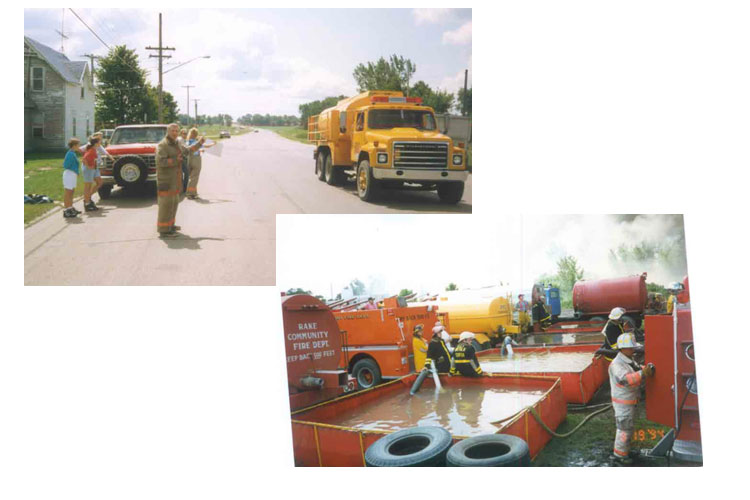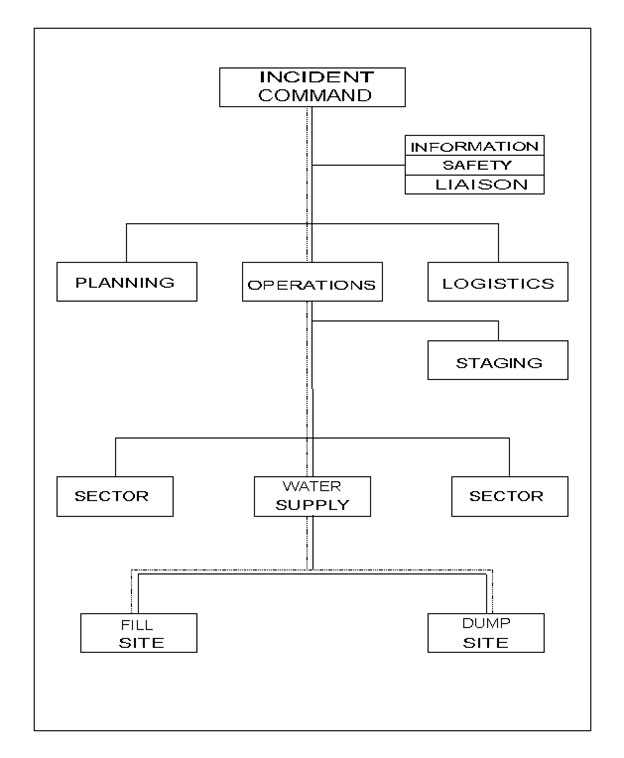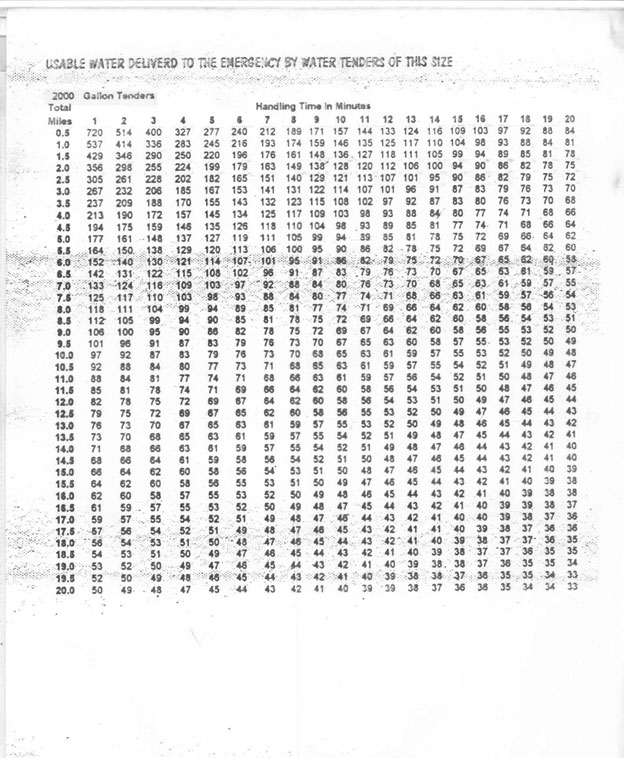

Article and photos by Tim Zehnder
When it comes to firefighting, people are your most valuable asset, and water is Number 2. If firefighters don’t have water or the ability to get water to the scene, we are inefficient and doing a disservice to the people we are sworn to protect. In our previous article, we discussed firefighter training and organization. Now I would like to start discussing water and how firefighters supply it to the scene.
The following questions must be answered for us to be effective:
- Without hydrants, where will your water come from?
- How will you ensure that you do not run out of water?
- How will you get the water to the scene?
- Do you have standard operating guidelines (SOGs) for tanker/tender water shuttle operations?
- Have you trained with your mutual aid departments?
Many departments in rural areas don’t have that cast-iron plug on every other corner, so where is your water going to come from? Tanker/tender shuttle operations are a very efficient way to get water to your scene, but if you have don’t practice it and have SOGs outlining how the operation will work, it will fail.
The key to getting water to the scene is time; by this I mean the time it takes for a tanker to load, travel to the scene, unload, and travel back to the fill site. Your fill site may be the hydrant system in your city, a lake, pond or river, it doesn’t matter it is still based on time. The faster you fill the tankers and the faster you unload the tankers, the more time you can make up. Simply put, if the truck is waiting, you are losing gallons per minute (gpm).
The Water Supply Officer and Other Critical Factors
So how do we prevent our tankers for sitting? The answer is to set up multiple fill sites and dump sites. An example of this is a fire at which my department provided mutual aid in February 2009. The city we went to only had a 50,000-gallon water tower. Within the first hour, I got a call on the radio from our engine, saying: “Chief 512 from Engine 1, my LDH just went flat!”
This is not what you want to hear. We had already requested all the tankers in the area and had water showing up and more on the way. Now what to do with them? We set up a water supply officer whose only job was to make sure the three pumping stations didn’t run out of water.
Each station had as many as four drop tanks, and we jetted the water from tank to tank to ensure that we never lost pressure. Tankers would contact the water supply officer, who would indicate which of three dump sites to use. As the operations officer on the fire, I never had to deal with water supply; the water supply officer handled it all. With multiple drop tanks, we could have up to three trucks dumping at the same time.
The other issue was where to fill. We had two fill sites from hydrants in the city we were from six miles away. We had another two fill sites in the city, six miles the other direction. This meant trucks did not to have to wait, and if they did, it was a very brief time.
One of the other things that speeds up the operations is having all fill connections standard across your mutual aid group. The first truck makes the connection to the hydrant with a ball valve on the hydrant; the hydrant can stay on and is controlled by the ball valve. The hose is equipped with a quick connect on the truck end, so the fill hose can stay at the fill site for the next tanker.
On the fire in question crews had commercial structures with common walls burning. We were able to haul more than 300,000 gallons of water and never lost pressure. How can you do this, you ask? It goes back to training. This is an operation that is drilled on with our mutual aid groups, and we have a plan in place to make it flow.
Training is key to making this all work.

Another option is having a fill site at a water source such as a pond or lake. These types of water augers (photos below) can be used to make filling faster. These could fill 2,000-gallon tankers in about 38 seconds.

The chart below shows where water supply falls in to the command chart.

In the chart below you, can figure your gpm: for example, with roundtrip miles being 12 miles and a handling time of 10 minutes, a 2,000-gallon tanker only supplies 58 gpm.

The information shows how important it is to minimize the handling time. The more efficient the tanker operations, are the better gpm you can achieve.
Hauling water to the scene is a large part of fighting rural fires. Training on this operation and becoming efficient is important to making sure incidents such as these run smoothly.
 Tim Zehnder began his fire service career in 1990 as a member of the Truman (MN) Volunteer Fire and Rescue Department, where he has held every position from firefighter to chief. He received his emergency medical technician and NFPA 1001 training that same year. Zehnder has a degree in fire science from Lake Superior College. He also worked for two years as an engine foreman for the United States Forest Service at the Payette National Forest in Idaho, was a Minnesota State fire instructor for 18 years, and was the fire rescue training program manager at a Minnesota state training college for seven years. He retired from the Truman Fire & Ambulance service in April 2013 after more than 21 years of service. Zehnder then accepted the position of director of fire science at the Mid Plains Community College. He is also a paid-on-call firefighter with the McCook City (NE) Fire Department and the president of the Nebraska Society of Fire Service Instructors as well as the city of McCook’s 2015 Firefighter of the Year. Zehnder co-authored the “Grain Bin Rescue” video for Fire Engineering Books and Videos and presents programs on firefighter survival and safety, rapid intervention team, rural tactics, grain bin rescue, and more. He is also an International Society of Fire Service Instructors 1403, Live Fire Instructor, and travels the country delivering the program.
Tim Zehnder began his fire service career in 1990 as a member of the Truman (MN) Volunteer Fire and Rescue Department, where he has held every position from firefighter to chief. He received his emergency medical technician and NFPA 1001 training that same year. Zehnder has a degree in fire science from Lake Superior College. He also worked for two years as an engine foreman for the United States Forest Service at the Payette National Forest in Idaho, was a Minnesota State fire instructor for 18 years, and was the fire rescue training program manager at a Minnesota state training college for seven years. He retired from the Truman Fire & Ambulance service in April 2013 after more than 21 years of service. Zehnder then accepted the position of director of fire science at the Mid Plains Community College. He is also a paid-on-call firefighter with the McCook City (NE) Fire Department and the president of the Nebraska Society of Fire Service Instructors as well as the city of McCook’s 2015 Firefighter of the Year. Zehnder co-authored the “Grain Bin Rescue” video for Fire Engineering Books and Videos and presents programs on firefighter survival and safety, rapid intervention team, rural tactics, grain bin rescue, and more. He is also an International Society of Fire Service Instructors 1403, Live Fire Instructor, and travels the country delivering the program.

